
The 1769 census was the first census covering the Oldenburg State: the Kingdom of Denmark, the Kingdom of Norway (including the Faroese Islands and Iceland), the Duchy of Schleswig, the Duchy of Holstein, and the Countship of Oldenburg.

The 1769 census was the first census covering the Oldenburg State: the Kingdom of Denmark, the Kingdom of Norway (including the Faroese Islands and Iceland), the Duchy of Schleswig, the Duchy of Holstein, and the Countship of Oldenburg.
| Country | Region | Inhabitants |
|---|---|---|
| Denmark | in total | 786,000+ [1] |
| Norway | in total | 774,000 |
| Norway proper | 723,000 [1] | |
| Faroese Islands | 5,000 [1] | |
| Iceland | 46,000 [1] | |
| Greenland | 6000 [1] | |
| Schleswig | in total | 244,000 [1] |
| Holstein | in total | 279,000 |
| royal part | 135,000 [1] | |
| ducal part | 144,000 [1] | |
| Oldenburg | in total | 79,000 [1] |

Lower Saxony is a German state in northwestern Germany. It is the second-largest state by land area, with 47,614 km2 (18,384 sq mi), and fourth-largest in population among the 16 Länder federated as the Federal Republic of Germany. In rural areas, Northern Low Saxon and Saterland Frisian are still spoken, albeit in declining numbers.
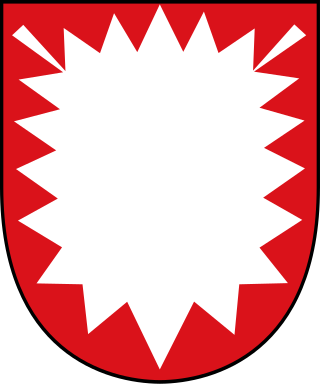
Holstein is the region between the rivers Elbe and Eider. It is the southern half of Schleswig-Holstein, the northernmost state of Germany.

The Duchy of Oldenburg named after its capital, the town of Oldenburg was a state in the north-west of present-day Germany. The counts of Oldenburg died out in 1667, after which it became a duchy until 1810, when it was annexed by the First French Empire. It was located near the mouth of the River Weser.
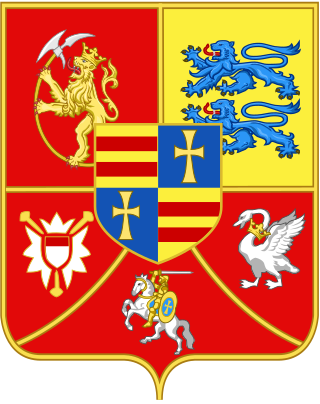
Holstein-Gottorp or Schleswig-Holstein-Gottorp is the historiographical name, as well as contemporary shorthand name, for the parts of the duchies of Schleswig and Holstein, also known as Ducal Holstein, that were ruled by the dukes of Schleswig-Holstein-Gottorp, a side branch of the elder Danish line of the House of Oldenburg. Other parts of the duchies were ruled by the kings of Denmark.

Bouches-du-Weser was a department of the First French Empire in present-day Germany. It was formed in 1811, when the region was annexed by France. Prior to the Napoleonic occupation, its territory had been divided between the Free Hanseatic City of Bremen, the duchy of Oldenburg, and the Hanoverian duchies of Bremen and Verden, the latter of which had intermittently been incorporated into the Kingdom of Westphalia in 1807. Its territory is part of the current German states of Lower Saxony and Bremen. Its capital was Bremen.
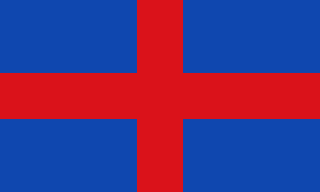
The Grand Duchy of Oldenburg was a grand duchy within the German Confederation, North German Confederation and German Empire that consisted of three widely separated territories: Oldenburg, Eutin and Birkenfeld. It ranked tenth among the German states and had one vote in the Bundesrat and three members in the Reichstag.

The Duchy of Holstein was the northernmost state of the Holy Roman Empire, located in the present German state of Schleswig-Holstein. It originated when King Christian I of Denmark had his County of Holstein-Rendsburg elevated to a duchy by Emperor Frederick III in 1474. Members of the Danish House of Oldenburg ruled Holstein – jointly with the Duchy of Schleswig – for its entire existence.

The coat of arms of the German federal-state of Lower Saxony shows a white Saxon Steed on a red background.
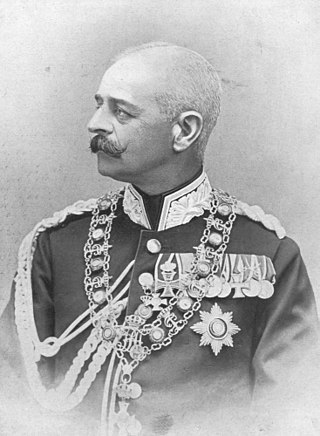
Frederick Augustus II was the last ruling Grand Duke of Oldenburg. He married Princess Elisabeth Anna of Prussia, daughter of Princess Maria Anna of Anhalt-Dessau and Prince Frederick Charles of Prussia. After her death, he married Elisabeth Alexandrine of Mecklenburg-Schwerin.

The German Empire consisted of 25 constituent states and an imperial territory, the largest of which was Prussia. These states, or Staaten each had votes in the Bundesrat, which gave them representation at a federal level.

The coat of arms of Oldenburg is the coat of arms associated with the state of Oldenburg, a county, duchy and then grand duchy that existed between 1101 and 1918. The arms are also associated with the parts of the House of Oldenburg that ruled the state.
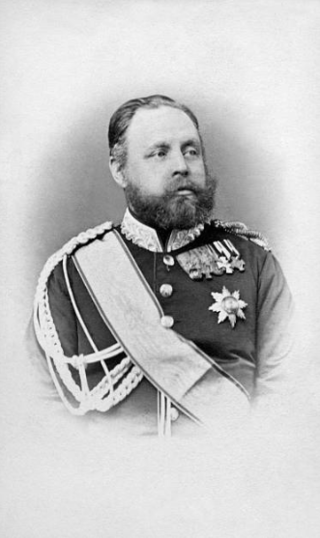
Peter II was the reigning Grand Duke of Oldenburg from 1853 to 1900. He claimed hereditary parts of Duchy of Holstein after the Second Schleswig War in 1864. After signing a treaty on 23 February 1867 in Kiel, he renounced his claims. In return, he received the district of Ahrensbök, the Prussian parts of the former Principality of Lübeck other than the village of Travenhorst, and was given a million taler as compensation from Prussia. Thus the Grand Duchy of Oldenburg gained access to the Baltic Sea.
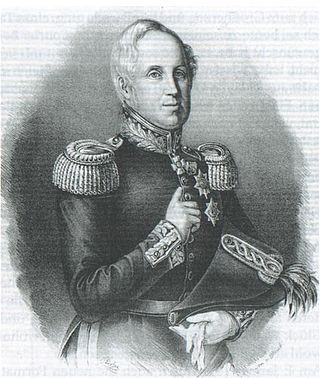
Augustus I or Paul Frederick Augustus was the reigning Grand Duke of Oldenburg from 1829 to 1853.
The North German Confederation Treaty was the treaty between the Kingdom of Prussia and other northern and central German states that initially created the North German Confederation, which was the forerunner to the German Empire. This treaty, and others that followed in September and October, are often described as the August treaties, although not all of them were concluded in August 1866.
The Grand Duchy of Oldenburg and the United States began mutual recognition in 1829 but never established formal relations. Relations continued when the Duchy joined the German Empire in 1871. Relations would eventually end with World War I when the U.S. declared war on Germany.
The Kingdom of Württemberg and the United States began relations in 1825 when both countries mutually recognized each other. Relations continued when Württemberg joined the German Empire in 1871. Relations would eventually end with World War I when the U.S. declared war on Germany.